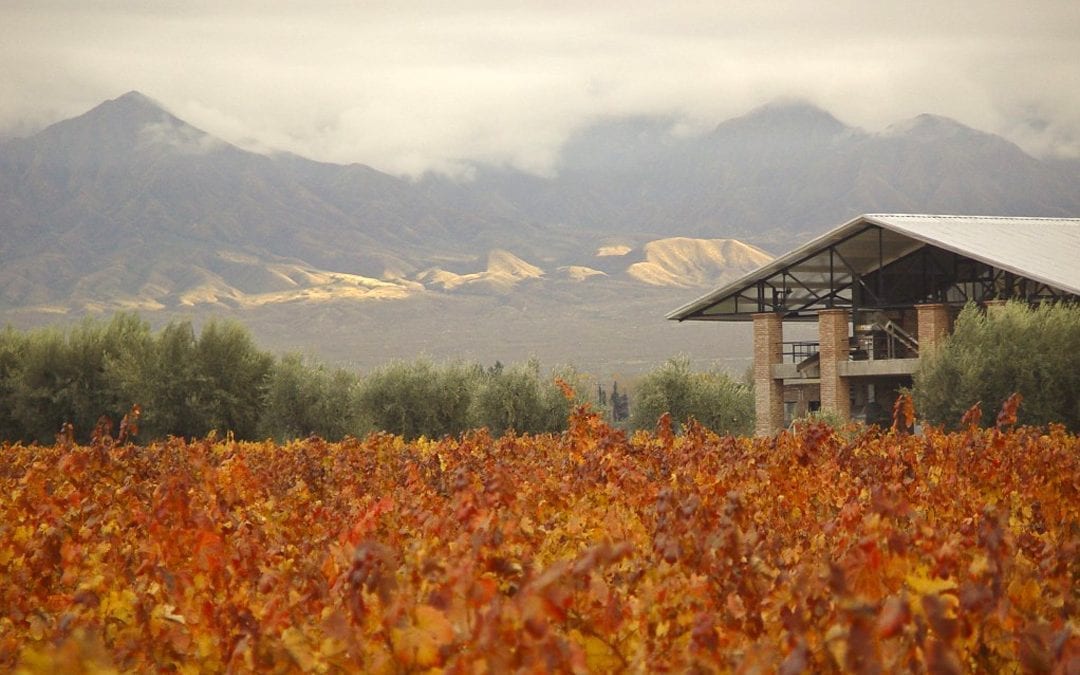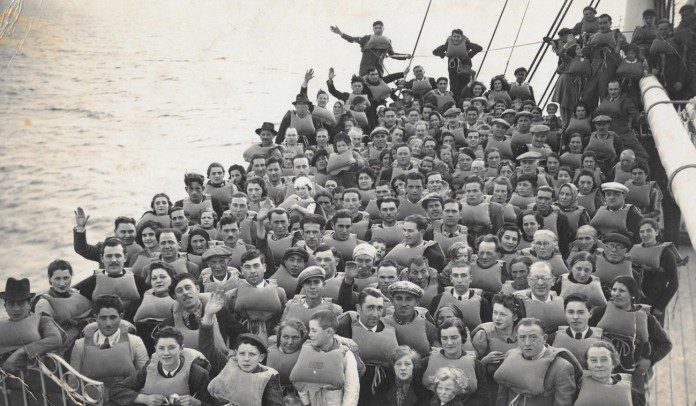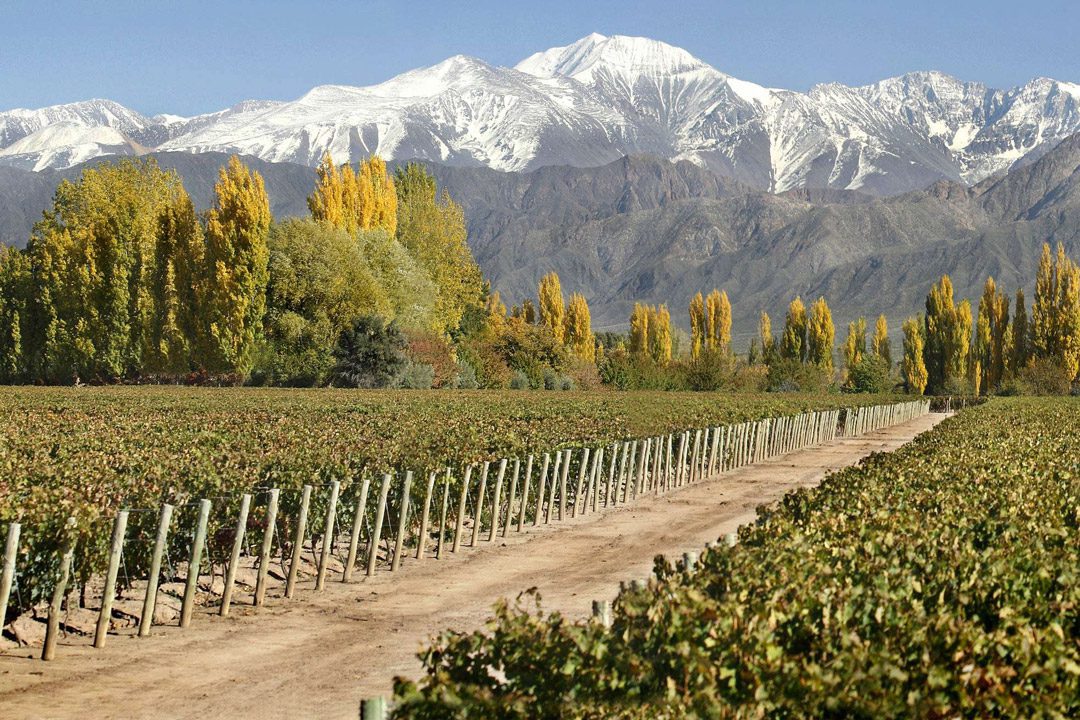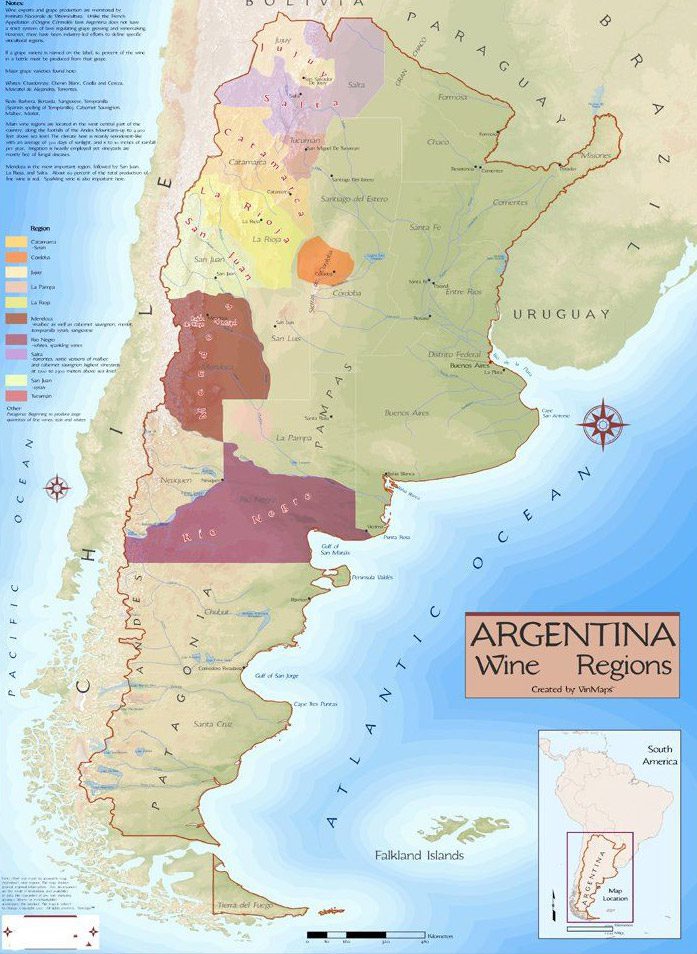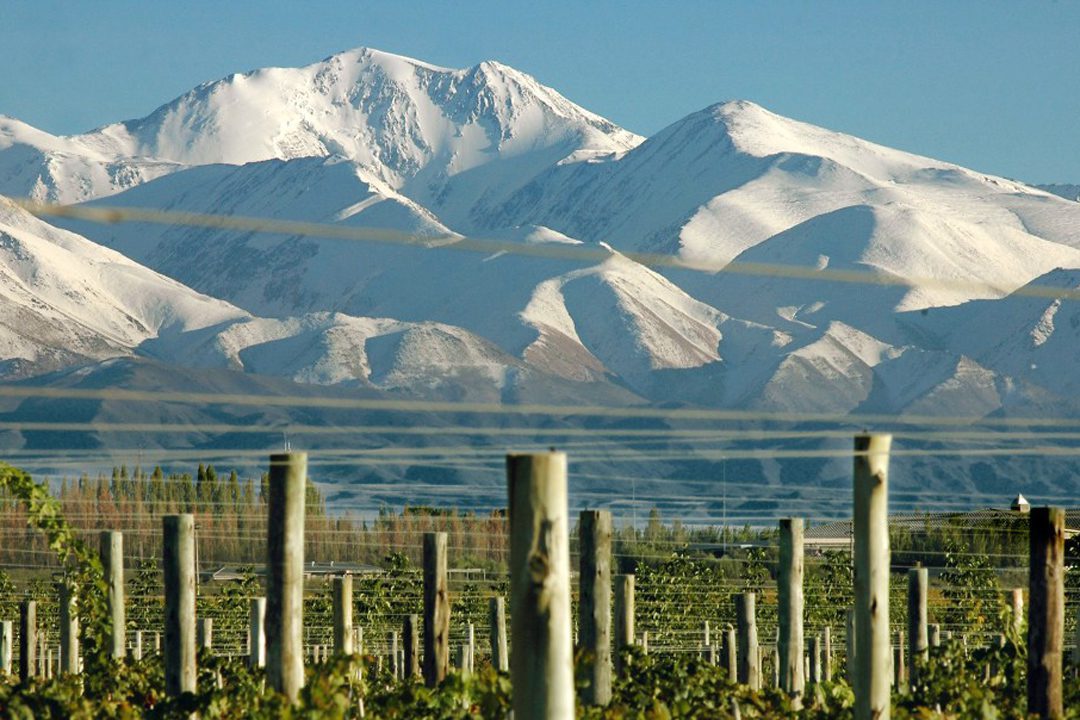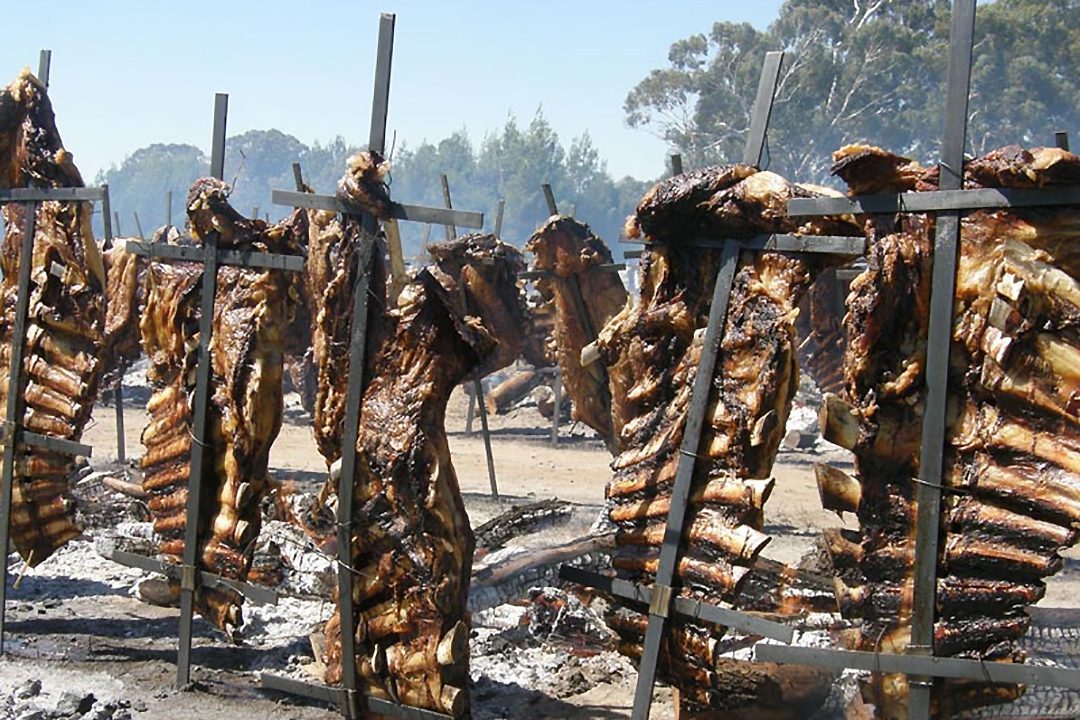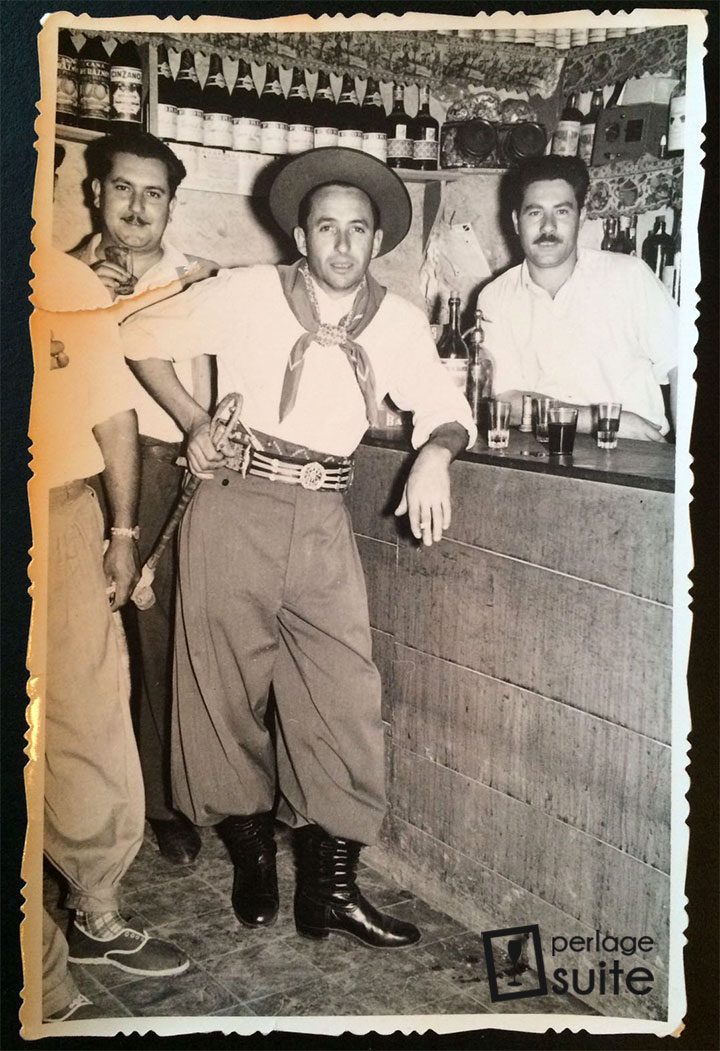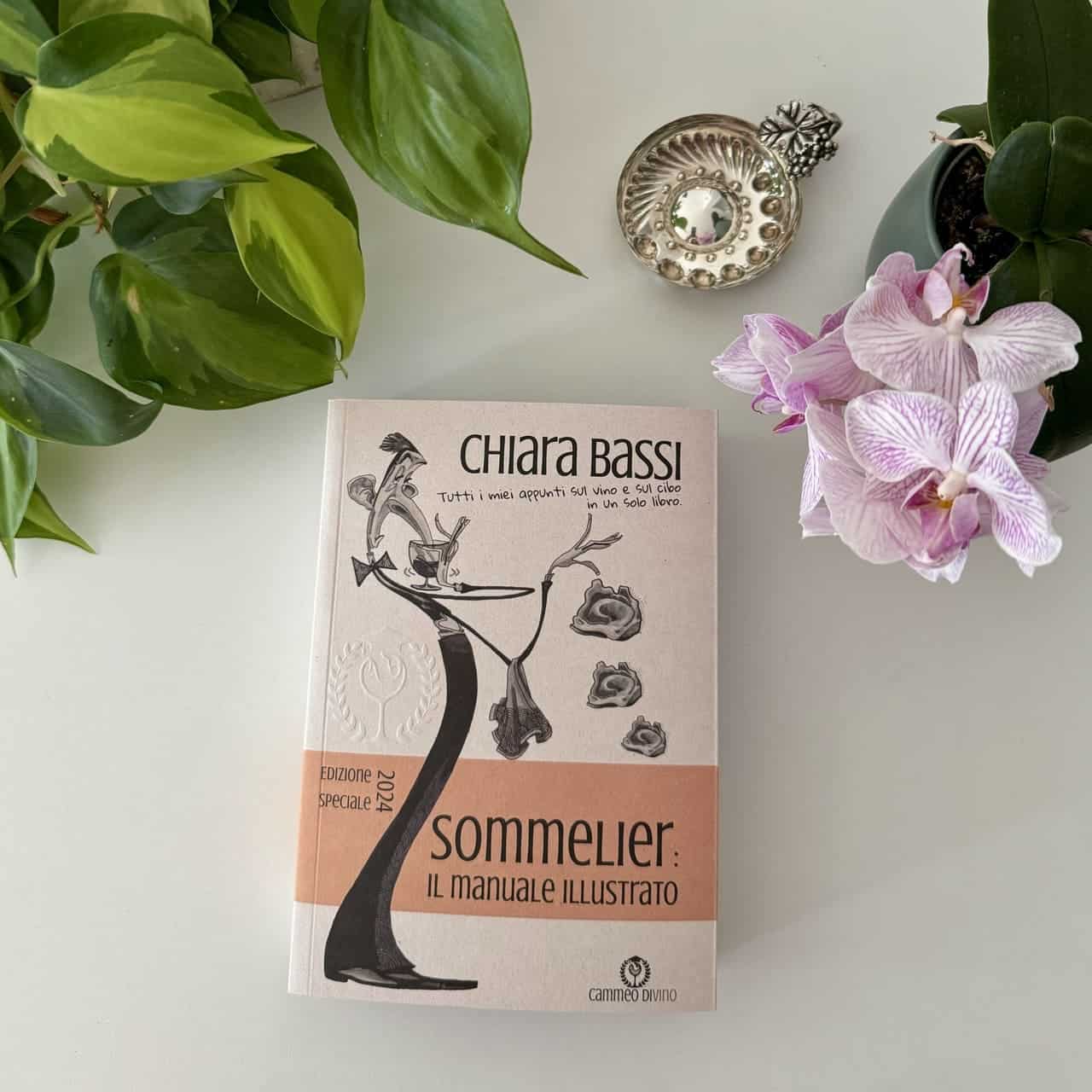I have been a little unsure what to write about today... also because every day you write me in great numbers with so many questions and curiosities about the world of wine. As always, I can't answer them all (but I do what I can), but I'll start right away with a first tip for passing the AIS examination! Don't forget to study even those things that seem secondary to youIn the exam they can ask you anything on the syllabus! So today I decided to combine the Father's Day talking to you about wines of the world... and since my dad was born in Buenos Aires, I'll tell you which are the best argentine wines!
Ever since I was a child, I have listened spellbound to the stories of my grandparents when they lived in Argentina... the lifestyle so different and yet so close to ours, the people, the huge boulevards of Buenos Aires, the endless expanses, the cult of meat that I still seem to savour. After all, Argentina is famous throughout the world for its meat, cooked on the spit as my grandmother used to tell me, when several families would gather around the fire on feast days. Succulent meat from cattle raised in the Pampas... but... what about the wine? Argentine wines don't enjoy the same notoriety as meat, yet there are full-bodied reds that pair perfectly.
Argentine wines: history
The grapevine in Argentina does not have a millennial history, but only arrived after the discovery of America in 1492. To be exact, it is traced back to the first planted in 1554 when Juan CidrónSpanish missionary, imported vitis vinifera from Chile and planted it in Santiago del Estero. It is said that also present with him was Juan Jufré, the second founder of the city of Mendoza, whose teachings laid the foundations of viticulture in the provinces of Mendoza and San Juan. Around 1700, the sale of agricultural land devoted to vineyards began. Land is valued according to the number of vineyards and their proximity to the main square of Mendoza.
Soon after, in the 1800s, the commercial production and sale of wine began thanks to Italian European emigrants. It is no coincidence that the grape varieties grown in Argentina come mostly from Italy! Moreover, with the boom in immigration, also facilitated by a policy that gave away land or sold it in instalments and at low prices to populate a large, almost uninhabited continent, also led to an increase in demand! Between 1880 and 1910, around 1,500,000 Italian emigrants arrived in an Argentina that, at the time, had fewer inhabitants than the entire continent: a mere 1,100,000 people! The emigrants were mainly Genoese and Piedmontese (Nebbiolo is still cultivated in Argentina today) so much so that in 1882 they hoisted the Genoese flag and founded the independent Genoese Republic of Buenos Aires... a revolt that was then intelligently suppressed without the use of arms.
'Argentines are Italians who speak Spanish and think they are English. Octavio Paz'
However, the French contribution was also very important: Aimé Pouget He was one of the pioneers of Argentinian viticulture and in the late 1800s established an experimental vineyard in Mendoza and introduced grape varieties such as chenin blanc, chardonnay and malbec. Other valuable contributions came from Tiburcio Benegas Ortiz Posse, a politician-entrepreneur and forerunner of the Argentine wine industry who founded a model winery called El Tapiche after building a 250 HA vineyard in Mendoza. At the time, no one in Argentina was investing in the wine business and he was instrumental in its growth!
The construction of two infrastructures was decisive: in 1884, a system of canals was built that allowed for the development of much-needed irrigation, while in 1885 the Mendoza - Buenos Aires railway line was built. These two works, together with theincreased demand for wine due to the many Italian emigrants used to drink itbrought wine-growing from 4,800 HA planted in 1887 to 32,000 HA planted in 1910. Within 60 years, as emigration continued, the Argentine vineyard grew to over 350,000 hectares. Unfortunately, the military dictatorship that held power between 1976 and 1983, during the so-called Dirty War period, caused a collapse of Argentine viticulture. As is often the case, not all bad things come to harm: when the military government fell, the vineyards were reorganised and the most suitable areas were favoured in order to begin quality-oriented production.
Following this foreign investors, mostly French, set their eyes on Argentine wines. They saw potential due to the quality, quantity and low costs of producing wines for the international market with an extraordinary quality/price ratio.. Later, buyers arrived from almost every part of the world. Moet&Chandon, for example, set up a real Argentinian subsidiary, from which it produces the famous Cheval des Andes, a blend of malbec, cabernet sauvignon and petit verdot characterised by a spicy and mineral bouquet of ripe fruit, which flows into the mouth with great elegance and structure. Cheval des Andes was born from the meeting of Château Cheval Blanc Premier Grand Cru Classé A in Saint-Emilion and Terrazas de los Andes in Luján de Cuyo, in the north of the Mendoza region. The result is a very interesting red wine to put on every winelovers' wishlist!
.
Argentine wines: geography
With its 2.78 million km² and 3,700 km length from North to South, Argentina has very different climates. In the west there are the Andes and in the north-west there is Aconcagua, the highest mountain after the Himalayan system and reaching almost 7,000 metres. It is practically the highest peak in the entire southern and western hemisphere! There are also several rivers, the main one being Río Paraná, the longest river in the Americas after the Amazon, which is almost 5,000 km long. Argentina also has several hot springs and large lakes. Perhaps most interestingly, Argentina has 4,665 km of coastline with two currents that alternate and influence the climate in a very important way: the Brazil Current is warm, while the Antarctic Falkland Current is cold. Also in the extreme south of Argentina we have Tierra del Fuego which, despite its name, is the closest point to the South Pole. Also there we have the Drake Channel, which is a place I dream of seeing sooner or later: here the Atlantic and Pacific Oceans merge, in a way in which nature really shows off its power: it is in fact one of the roughest spots on the planet!
Argentinian wines: climate
The climate ranges from subtropical in the north to subpolar in the south. Northern Argentina is characterised by very hot and humid summers, mild and dry winters and regular dry spells. Central Argentina is characterised by hot, stormy summers that cause the most dangerous and abundant hailstorms on the planet and cool winters. Southern Argentina is characterised by cool summers and very cold and snowy winters. Another determining factor for viticulture are the 3 main winds: the cold Pampero, the hot Vento del Norte, and the terrible hot Zonda of Central Argentina that blows creating gusts of up to 120 km/h. Finally, the extreme south of Argentina experiences up to 19 hours of daylight per day from November to February, while from May to August there are long nights.
A curiosity? Both the highest and the lowest temperature in all of South America were recorded in Argentina! The maximum - 49 °C in Salta Province on 11 December 1905. The minimum - 33 °C in Chubut Province on 1 June 1907. This is absolutely significant to understand how different the various areas of Argentina are!
.
Argentine wines: soils
I soils in the vineyard areas are mainly of alluvial, morainic and volcanic origin. These are fairly fertile clay-loam soils in which the vines grow and bear fruit with great vigour. In some areas, loose and sandy or pebbly soils can be found, which are very draining and not very fertile, but for this reason suitable for producing more structured wines of better quality. Soils are cultivated up to 1,700 metres above sea level.
.
How do geography, climate and soils influence Argentinian wines?
From what I have written it seems evident that the only area really suitable for viticulture is northern Argentina! In the centre the terrible hailstorms and gusts of wind, in the south freezing temperatures and snow! The Argentine vineyard starts in the north and winds its way south for 1,700 km occupying the whole of northern Argentina. Here irrigation is indispensable because of the hot-dry climate and low rainfall. Dams, canals and wells exploit rivers and compensate for natural water shortages.
In short...
.CLIMATE = hot e dry in the plains, cool and with large temperature ranges above 500 metres above sea level.
LAND = alluvial, sandy or pebbly
KEY GRAPE VARIETIES = white berry: pedro jiménez (fragrant, fruity, fresh and spicy wines for the domestic market), torrontés (fragrant, fruity, fresh and spicy wines for the domestic market), chardonnay (It is mainly used for wines destined for the Anglo-Saxon market. The resulting wines have an international slant: the chardonnay often makes a passage in barriques to obtain wines with structure and warm spicy notes. However, in the area of the Padernal Valley, at an altitude of 1,340 metres, very fresh chardonnays with very interesting aromas are produced thanks to the temperature range), Muscat of Alexandria (it is used to produce high quality aromatic whites, especially in the Salta area), chenin blanc (together with trebbiano and sémillon, it is mainly used as a blending wine for the production of sparkling wine bases in beautiful Patagonia), trebbiano, riesling - pink berry: pink Muscat (vinified in white) - black berry: cereza (the most cultivated grape variety - it produces medium to low quality rosé wines used in the domestic market as table wine), criolla (the most cultivated grape variety - it produces medium to low quality rosé wines used in the domestic market as table wine), malbec (the main grape variety in the production of the best Argentinian wines. It produces wines of a deep ruby red colour, with aromas of ripe fruit and spices, soft and structured), bonarda (traditionally the dominant grape variety, today it is in slight decline. The wines produced are nevertheless interesting for their aromas and well-blended tannins), nebbiolo, syrah (It has recently become one of the most cultivated red grape varieties and produces alcoholic, structured and spicy wines), sangiovese, cabernet sauvignon (wines destined for the international market and characterised by spicy and herbaceous aromas, acidity and great temperament), tempranillo (young, fruity and fresh wines are obtained, mostly for the domestic market), merlot (mainly used as blending wine for wines destined for the international market).
VITICOLTURE = compulsory irrigation in the lowlands, vines traditionally grown in high espalier e marqueeare also widely used today. spurred cordon and the guyot. To cut costs the collection is mostly made with mechanical means.
KEY ZONES = Mendoza (where mainly Mendoza Malbec is produced, and in the east the white wines of torrontés, trebbiano, chardonnay and riesling are excellent) - 70% of Argentinian wine production), San Juan (excellent sherry-style wines made from torrontés riojano with high alcohol content and low acidity - 18% of Argentinian wine production), Rioja (white grapes that, due to the climate, become sugary and fragrant but with low acidity destined mostly for drying and 'unpretentious' production - 3.5% of Argentinian wine production), Patagonia - Rio Negro (fruity and perfumed wines made from pinot noir, sauvignon blanc, chardonnay, chenin blanc and sémillon, which are mostly sparkling bases - 2% of Argentinian wine production), Skip 1,700 m a.s.l. near the tropics (where Cafayate Torrontés, a very fresh white wine, is produced), Maipu (Cabernet Sauvignon, Malbec and Chardonnay are produced), Padernal Valley 1,340 m a.s.l. (high level wines due to temperature differences of up to 20 °C between day and night - especially international whites)
.
Argentinian wines: a wine and food pairing not to be missed
When I think of Argentinian cuisine, I immediately think of theAsadoThat is, large cuts of beef (let's say whole beasts!! in fact, my grandmother told me that they all ate it together with the neighbours) left to cook slowly over the coals for many, many hours. It should be noted that the real Asado is made as in this photo, with the meat attached to a pole driven into the ground with embers around it, and not grilled as some 'Argentine restaurants' in Italy propose. Perfect pairing with the Mendoza Malbec, a red wine characterised by ripe fruit notes that fade into vegetable and spicy notes, soft but with great structure and intensity.
Asado originated as the 'obligatory food' of the Argentine gauchos, who found this delicious meat to be their only food. The gauchos are the South American version of the North American cowboys. They were basically skilled horsemen who drove herds of wild cattle and traded them with the city centres. Needless to say, the meat of these beasts, thanks to nature and free grazing, was of a unique goodness.
I feel it only right to close this article with a photo of my dear grandfather Wagner in gaucho form. 😍
I can't wait to leave to discover the beauty of Argentina and to visit the local wineries!!! 😍
Cheers 🍷
Chiara
P.S. I am still missing an Argentine wine tour, so for some of the photos in this article of the Mendoza vineyards, I have taken those from this dedicated blog which I definitely recommend you read and thank you! Say Hueque - Tralvel tales of Argentina
P.P.S. Another necessary thing is to close with a poem I wrote in 2011 thinking of my grandmother... verses made of memories and stories of a great love.
Verano Porteño
With rare elegance you combed your hair slowly
Circe's hair tousled by Pampero
the mirror reflected his face unchanged
while in the north-east you laid butter memories
preparing your body for the last tango.
Not a storm would steal your dreams
not a departure would have changed your ways
You smiled.
Argentina does not forget
who held her children in her womb.

